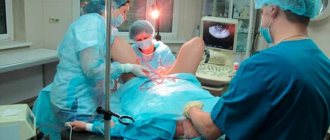Author: Mr. Jingles
December 15, 2015 20:17
Tags: tough medicine not for the faint of heart surgery face transplant
40789
11
About 20 years ago, face transplant surgery could only be seen in science fiction films, but nowadays this incredible procedure is no longer a fiction - over the past 10 years, 28 victims of serious accidents and accidents have already received new faces. Of course, this procedure is not cheap - the operation itself costs patients half a million dollars, plus about $40,000 annually is spent on medications. Is it worth it or not - watch and judge for yourself!
0
See all photos in the gallery
Isabelle Dinoire - the world's first partial face transplant
0
Source:
The first face transplant operation in history took place in France, in a hospital in Amiens. It was carried out on 46-year-old Isabelle Dinoire, who was mutilated by her own dog. In May 2005, the woman took a large dose of sleeping pills. Although many believed it was a suicide attempt, Isabelle stated that the overdose was an accident. While the woman was unconscious, her black Labrador Tanya tried to wake up her owner and at some point began to chew on her. When Isabelle woke up and looked in the mirror, she discovered to her horror that part of her face was missing. Some time after the tragic incident, Isabelle met with surgeons Bernard Deuvelle and Jean-Michel Dubernard, who offered to transplant her the face of a woman who had died in a neighboring city. Isabelle received new bone marrow cells, skin, nose and chin. The operation was successful and marks a turning point in the history of surgery.
×
Where do donor material come from?
A tissue donor becomes a patient who has been diagnosed as brain dead, or a person who has just died in a traffic accident or under other circumstances. In other words, the facial part can be taken from a person (with an uninjured face, of course) who has recently died or someone whose life is supported only by devices.
Finding a suitable donor is a lengthy process. The donor and the patient must have the same gender, the same blood type, and approximately equal size of the facial part of the skull and face as a whole. The tissues of the donor and the future carrier of the new person must be compatible in antigenic structure. It is necessary to make sure that the donor does not have chronic diseases or previous viral infections.
There are also legal subtleties of donation. The consent of relatives, certified by law, is necessary; the deceased himself during his lifetime should not express disagreement with the idea of organ donation or leave written evidence of this.
The death of the future donor is certified by a forensic expert. Only then can the transplant team begin to work.
The collected material must be transported in accordance with all rules. Otherwise, processes of necrosis may begin in it, and then normal engraftment of the flap is impossible.
Oscar - the world's first full face transplant
0
Source:
A horrific gun accident has left a Spaniard named Oscar with virtually no face. The man lived with it for five years until skin closed over his mouth in 2010, leaving him unable to breathe, eat or speak. His life turned upside down when he met surgeon Juan Barrett, who offered him a full face transplant. On March 20, 2010, Dr. Barrett began the longest facial surgery in history. He had to restore the missing facial muscles, nose, lips, upper jaw, teeth, cheekbones, palate and lacrimal system. The procedure began with the surgeon removing facial tissue from the donor without damaging nerves or blood vessels. As a result of the procedure, Oscar was able to breathe and eat on his own for the first time in several years.
Medical Features
Penis transplantation is a much more complex task than, for example, kidney transplantation. The organ consists of different tissues: muscles, skin, blood vessels, nerves (Fig. 2). Its transplantation requires a different approach than the transplantation of entire internal organs - vascularized composite allotransplantation (VCA; Fig. 2), in which an entire functional unit with a connection of nerves and blood vessels is transplanted. For example, face or limb transplants fall into this category.
Figure 2. For a penis transplant (especially with a scrotum), a vascularized composite allotransplantation is required , which requires the connection of nerves and blood vessels. This operation required the removal of damaged recipient tissues and the connection of three arteries, four veins, two nerves and the urethra to the donor tissues
Devon Stuart for Johns Hopkins Medicine
VCAs are performed much less frequently than solid organ transplants. Since 1998, the first successful VCA, more than 200 people have received similar allografts [1]. Although today's rare surgeries are successful, they need to be studied more thoroughly in animal models, including the development of safer protocols for the long-term use of immunosuppressive drugs. Ex vivo models for testing drugs on individual cultured tissues of the body are already emerging, such as the work of Nikolai Sopko and colleagues in 2022 [2].
Despite the successes of both conventional (solid organ) transplantation and VCA, the need for immunosuppression remains one of the most important factors slowing progress in this field. According to the American Society of Transplantation (AST), this type of allograft requires not only rapid restoration of blood flow and careful selection of the donor-recipient pair, but also individualized immunotherapy: the transplanted tissues differ in immunogenic and functional characteristics. Statistically, the incidence of acute organ rejection after VCA in the first year is 80%, compared with approximately 10% for renal allografts [3].
In the case of functional unit transplantation, long-term systemic therapy that suppresses graft rejection (translated as graft; editor's note) can lead to diabetes mellitus, nephrotoxicity, osteonecrosis, leukopenia, hypertension, hyperlipidemia, and opportunistic viral and bacterial infections.
If, during a transplantation of, for example, a heart, a person’s life depends on the operation, then it is impossible to objectively answer whether the game is worth the candle in the absence of a penis or uterus: this is not life-threatening. This is due to the ambiguous attitude of doctors and the public towards such a procedure (more on this below). In the end, only the patient himself can decide this for himself. And the doctor can help him make the most informatively informed decision.
Unlike solid organ transplantation, some types of VCA provide a unique opportunity to avoid systemic immunosuppressive therapy by delivering the drug locally to the transplanted organ. Strategies referred to include superficial local and transdermal therapies, subcutaneous injections, and intravascular administration. Naturally, this will help avoid side effects on other organs and the body as a whole. The drug, according to experts, should inhibit such immunological processes as activation of antigen-presenting cells (APC), priming of T-lymphocytes, involvement of B-lymphocytes, transendothelial migration of activated B- and T-lymphocytes and immunological reactions in nearby lymph nodes. In addition, local drugs can prevent ischemic and reperfusion injury to tissues.
Unfortunately, the immediate introduction of these methods into clinical practice cannot be expected, since the effectiveness of local immunosuppression for VCA in clinical settings remains unproven [1].
Immunological certificate
It is immediately worth noting that the general biological processes that occur during VCA largely coincide with those occurring during transplantation of solid organs. Modern methods of immunosuppression cope effectively with their direct task and control cases of acute transplant rejection [3].
But still, VCA has its own peculiarities. The size of the transplanted organ can also influence biological responses. Different tissues respond differently to transplantation: for example, skin is more likely to be rejected than other tissues, while muscles are more sensitive to ischemia and reperfusion injury [4].
Overall, the response to VCA is the result of a complex interaction between innate and adaptive immune responses. These processes are very complex, and we will only focus on their main stages.
Recent evidence suggests that the adaptive immune system senses specific antigens and subsequently activates the innate immune system, increasing the response to the allograft. Of all the VCA components, skin is usually the one that causes the most problems. According to one hypothesis, the skin reacts more sensitively to rejection. However, according to the generally accepted concept, it itself is more immunogenic, and it is precisely because of the molecular processes occurring in it that graft rejection most often occurs. There was even a special term - “split tolerance”, when the musculoskeletal tissue takes root, and the epidermis is rejected [1]. This is another “plus” to the hypothetical use of topical immunosuppressive drugs - fortunately, applying them to the skin will not be a problem [1].
Briefly, innate immune cells, as part of their response to “danger,” recognize damage-associated molecular patterns (DAMPs) that appear in the allograft as a result of transplantation. The release of chemokines and P-selectin recruits leukocytes to the transplant site. Attracted macrophages in turn produce proinflammatory cytokines: IL-1 and IL-6, which potentiate the antigraft response and recruit antigen-presenting cells into the response. Theoretically, the innate response will be activated (albeit to a lesser extent) even if the genome of the transplanted organ cells matches the DNA of the recipient - due to molecules released during surgery and "danger" signals [3].
Many immune processes in vascularized composite allotransplantation overlap with inflammatory conditions of the skin. The main participating cells are endothelial cells of the dermis and dermal APCs with keratinocytes. The latter, unlike other allograft cells, express the major histocompatibility complex (HLA class two) and activate T lymphocytes during inflammation. The unique innate response of skin-containing VC allografts is also associated with cutaneous alarmins, molecules from the DAMP group. They are generated endogenously by keratinocytes and resident leukocytes of the skin after various stresses.
Intuitively, one can assume that it is the recipient’s immune cells that reject the allograft. However, there is evidence that in the case of VCA this is not entirely true: the donor’s skin cells, according to the results of studying biopsies after transplantation, also contain many immune cells. Such “transplanted” foreign cells can also influence rejection [4].
Connie Culp
0
Source:
One terrible day, mother of two Connie Culp was shot in the face by her husband. Shortly after this, the man committed suicide, and Connie, being a true fighter, held on and continued to live despite the horror she had to go through. Without her nose, cheeks, one eye and mouth, Connie could not breathe and had to have a hole cut in her throat. For four years, Connie suffered without a face, and finally, in 2008, she received a second chance at life. The operation to restore her face was performed by surgeon Maria Semenova, and the result was very positive: Connie received a new nose, cheeks and smooth skin. A year later, Connie even regained her sense of smell - just think, smell! Thanks to the efforts of Semenova and her colleagues, the woman not only regained her lost ability to smell, but was even able to eat solid food again.
Grzegorz
0
Source:
In one day, this man from Poland suffered more troubles than most people experience throughout their entire lives. Two years ago, as a result of an accident with a stone-cutting machine at a brick factory, Grzegorz actually lost his face. The 33-year-old man underwent emergency face transplant surgery, which lasted 27 hours. He can now breathe on his own, see, eat, taste and speak, although his speech is difficult to understand because his facial muscles have yet to regain mobility.
Richard Norris
0
Source:
In 1997, a handsome 22-year-old named Richard Norris found himself with a shotgun at the worst possible time. Suffering from depression, Richard attempted suicide with a shot to the head. The guy's parents immediately took him to the hospital, and he survived - which cannot be said about his face. Ashamed of his ugliness, Richard became a real hermit - for 15 years he lived away from people in a house without mirrors, without uttering a word. One day, his mother found a doctor who specialized in facial transplants. Despite the risk, Richard agreed to the operation. Surgeon Eduardo Rodriguez worked a miracle - he managed to restore the patient's face so successfully that Richard now speaks again, stopped covering mirrors and feels confident enough to live in society.
Organ donation
It is too early to classify transplantation of the penis or penis and scrotum as an understandable and proven operation. There are no uniform and clear guidelines or instructions yet.
“Prior to the transplant, we contacted teams from South Africa and Boston to discuss their experience with the surgery,” said Johns Hopkins University's Dr. Redette, a member of the surgical team. “The number of these surgeries is so small at this time that communication between teams is critical as we look to continue to innovate and provide the best we can to our patients.”
In addition to ethical issues, assessment of psychiatric and psychological status, when dealing with this topic, doctors are faced with new medical and biological problems. In particular, the course of the operation itself and protocols for immunosuppression and anesthesia for vascularized composite allotransplantation are currently the subject of scientific discussion and study.
However, the American waiting list (Organ Procurement and Transplantation Network, OPTN) has already been supplemented with an on-demand option for vascularized composite allografts. These include the limbs, abdominal wall, face, uterus and penis. In the period from 2014 to the beginning of 2022, there were three requests for penile transplantation on the waiting list, and 15 for uterine transplantation [15]. An analysis of requests for transplants showed that interest in uterus transplantation jumped after the patient was able to give birth to a healthy child.
This single case encouraged not only doctors, but also women suffering from congenital uterine dysplasia or left without it due to previous treatment, including for oncological indications. Apparently, we should expect an increase in interest in penis transplantation - at least, existing experience hints at this.
Psychological and ethical aspects of the issue
Transplanting an entire unit of a donor's body also has ethical stumbling blocks. The ambiguous attitude even from specialists is explained by the fact that the absence of the penis or uterus is compatible with life. The public at large is similarly ambivalent about such operations. According to an American survey on willingness to become a VC allograft donor, only half of Americans are ready to become posthumous donors of the penis or face, while nine out of ten Americans are ready to donate any solid organ [16]. It is usually easier for relatives to agree to the transfer of a kidney that is invisible to the eye than to a penis or face transplant [17]. So this situation requires a coordinated government approach to awareness and education regarding VCA among both the public and health care professionals.
Psychological difficulties also arise on the other side of the barricades - on the part of patients, as, for example, happened with a penis recipient from China. According to experts, before transplantation it is necessary to try to calculate the psychological response of potential allograft recipients to the operation. This can be done, for example, based on their history of medical care and ability to strictly follow doctors' orders, their attitude towards injury and their expectations from surgery [8].
Since life, for example, without a penis does not pose a threat to the patient's life, the patient, before making a decision about surgery, should receive full information from the doctor about the risks and side effects of possibly lifelong immunosuppressive therapy.
When considering operations of this kind, experts raise the question of the need for a psychiatric examination. It is possible that the patient will not be able to live with someone else’s reproductive organ, or that the psychological trauma from its rejection, non-functionality, or lifelong use of immunosuppression will worsen the patient’s condition even more than even the absence of the organ itself.
Doctors at Johns Hopkins University are going to continue to improve in this area of surgery. According to Dr. Richard Redette, the team of doctors now specializes in reconstructive surgeries after injuries. But in the future, perhaps they will also deal with cases of loss of the penis after amputations for oncological indications. In addition, Dr. Redette is also considering the possibility of including men with severe congenital deformities of the genital organ, in particular bladder exstrophy, in this program. According to official statements, their plan for the future is to perform 60 more transplants.
The original version of the text was prepared for the journal “Urology Today” by the publishing house “ABV-Press”.
Sharla Nash
0
Source:
In 2009, 55-year-old Sharla Nash from Connecticut, as always, came to visit her boss. But this time her life changed forever - she was attacked by an almost 100-kilogram chimpanzee belonging to her boss. The woman miraculously managed to escape death, but she lost her arms and part of her face. Sharla found hope when the US Army offered to pay for her $300,000 face transplant surgery. Although Sharla had never served in the army, the military offered her help under the pretext that her case needed to be studied in order to subsequently perform similar operations on mutilated soldiers. Sharla agreed to the surgery and follow-up tests. The face transplant was successful, but unfortunately the hands were not transplanted. Sharla sued her boss for $4 million.
Dallas Vince
0
Source:
A tragic incident in 2008 left Dallas Vince without a face - his eyes, nose, ligaments, muscles and soft tissues instantly melted as a result of contact with a high-voltage wire. For two years the man lived without a face, fed through a tube and got used to blindness, until one day he learned from Dr. Lawrence Altman about the possibility of a full face transplant. After long hours of surgery, Dallas became the owner of a completely new, almost fully functioning face. He considers himself truly lucky: “Life after tragedy exists. My whole life is a miracle.”
After transplant
The patient is prescribed immunosuppressants for life—medicines that suppress his immune system. This prevents the new face from being rejected.
The problem is that reduced immunity leads to the development of various infectious diseases. For this reason, the patient is prescribed simultaneous administration of several antibiotic drugs for a period of 12 months. After this period, some of the antibacterial agents must be discontinued, and some will be used by the patient for life.
Long-term use of immunosuppressants leads not only to infectious complications. Such patients are prone to developing cancer and kidney pathology.
After transplantation, medications are required to prevent scar formation.
It takes a very long time for tissue sensitivity to be restored, as well as functional capabilities (eating, articulating normally when speaking, re-mastering facial muscles).
Psychological disorders are also common in patients who have undergone a face transplant. They look at themselves in the mirror and see someone else's face. For this reason, assistance from a psychologist and psychiatrist is provided in the postoperative period.
Mitch Hunter
0
Source:
An Indiana soldier sacrificed his face to save the life of a stranger. In 2001, the car Mitch was in crashed into a power pole, causing him to fall. Mitch saw a high-voltage wire fall on a woman from another car and rushed to help. He saved the woman, but due to contact with the wire, he was electrocuted for five minutes - as a result, the guy’s face simply melted, he also lost a leg and several fingers. He lived in agony for several years until surgeon Bogdan Pomagac at Boston's Brigham and Women's Hospital offered him a face transplant. Dr. Pomagach used a face transplant to restore Mitch's nose, eyelids, lips, as well as the muscles and nerves that control facial expressions. Several years after the operation, Mitch has regained the ability to speak, he can now feel the skin on his face, grow hair on it and move the muscles around his mouth almost effortlessly.
Expert opinion
Bobrov Boris Yuryevich, endovascular surgeon, Candidate of Medical Sciences, medical director of the European Clinic (Scientific Center for Modern Surgery and Oncology), head of the department of endovascular surgery of the Perinatal Medical Center, leading researcher at the Center for X-ray Surgery of the Russian State Medical University named after. N. I. Pirogova :
“Indeed, in recent years we have observed rapid improvement in surgical transplantation techniques, methods for selecting donor organs that reduce the likelihood of rejection, and long-term medical management of these patients.
However, much more significant problems remain unresolved - problems of organizing the work of a donor service on a specific country scale, the problem of a shortage of donor organs, as well as solving significant ethical problems that arise when using organs for transplantation from both living donors and organs of deceased people.
Read on social networks!











